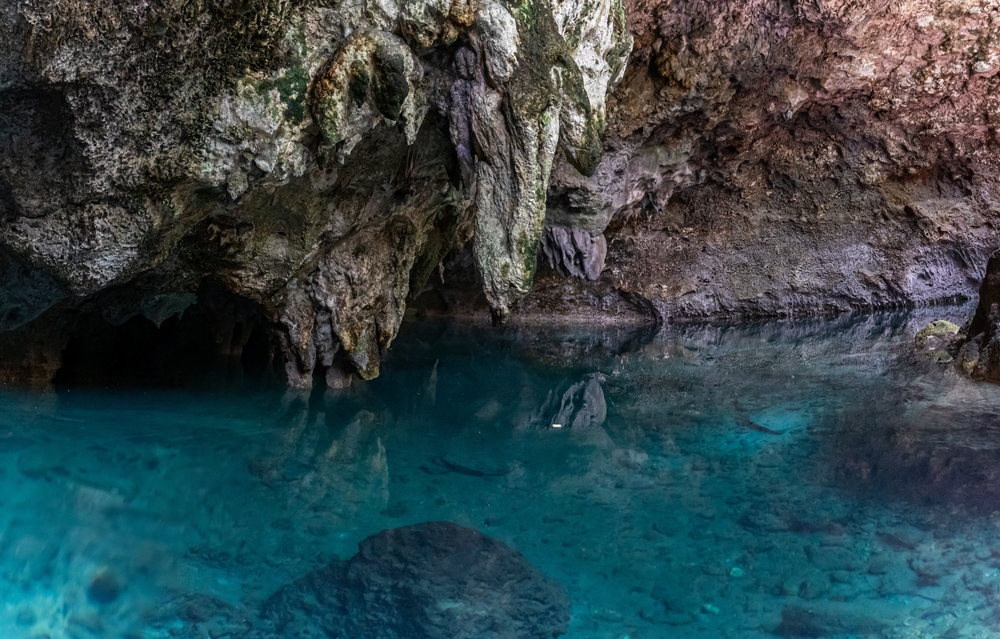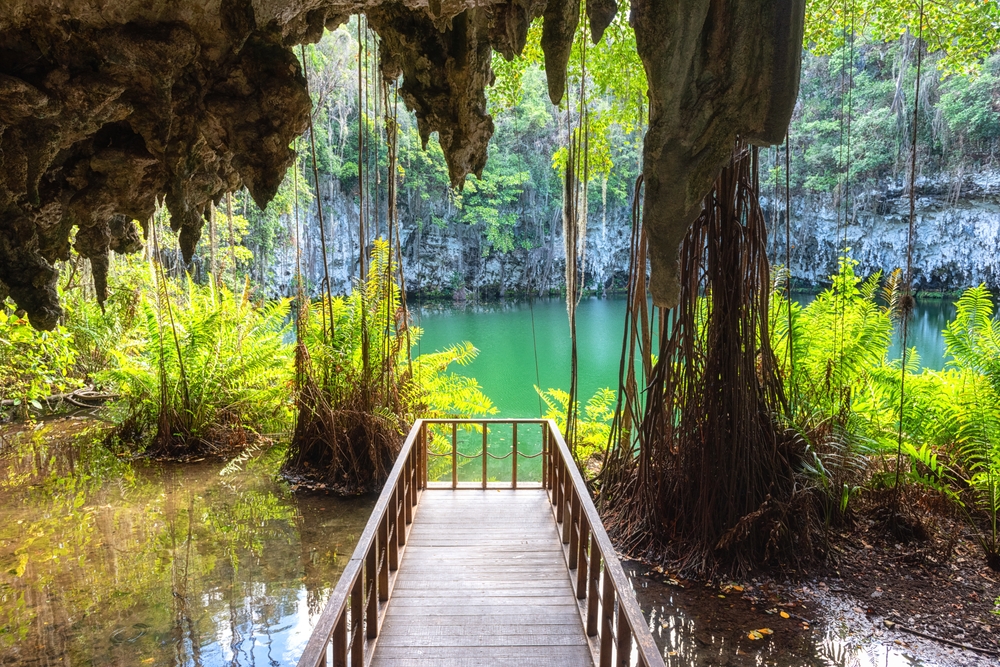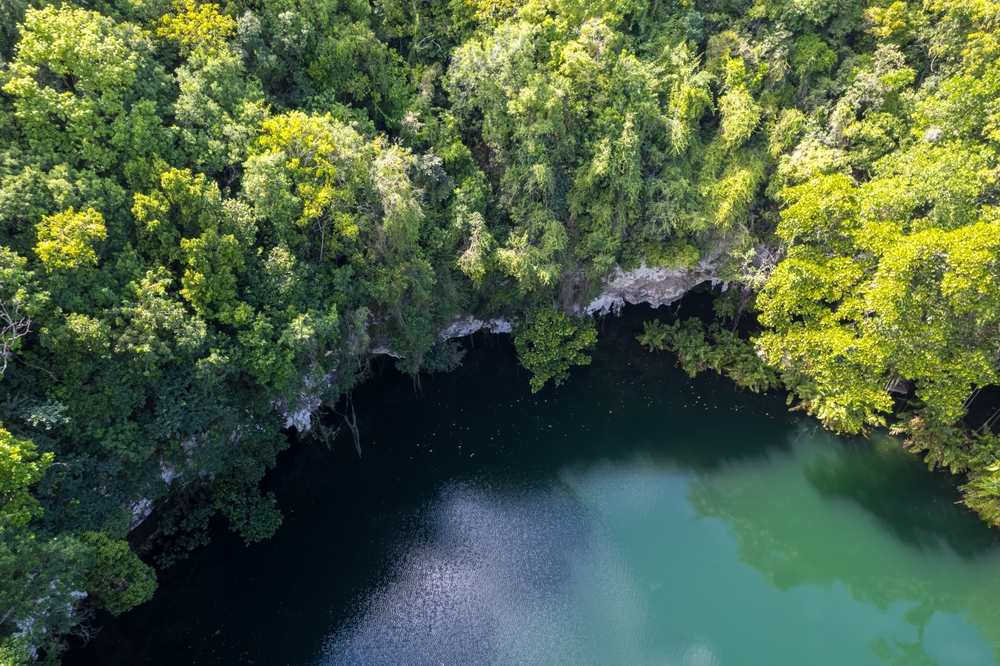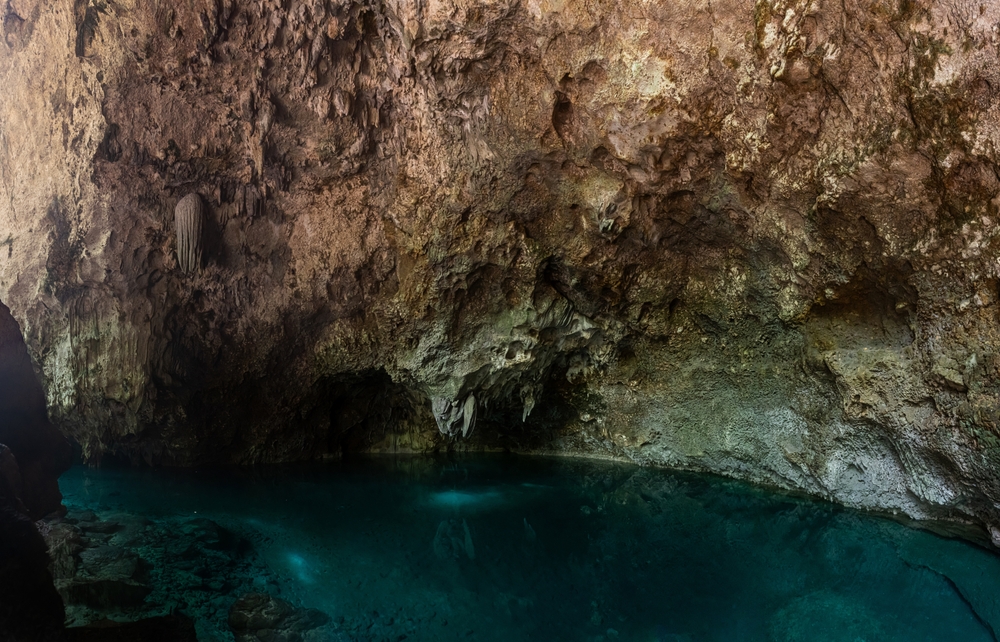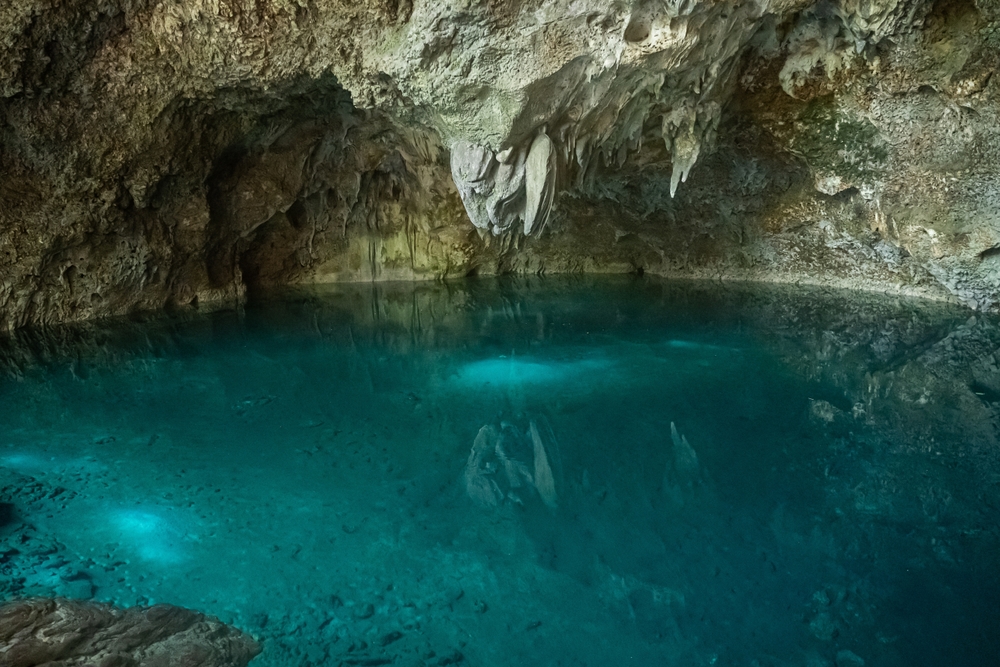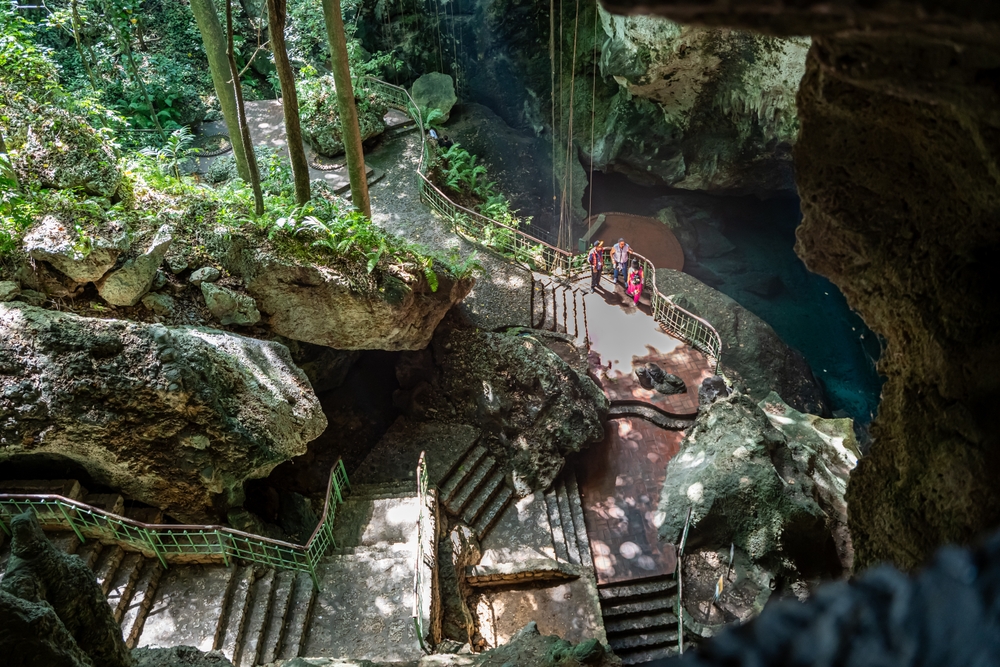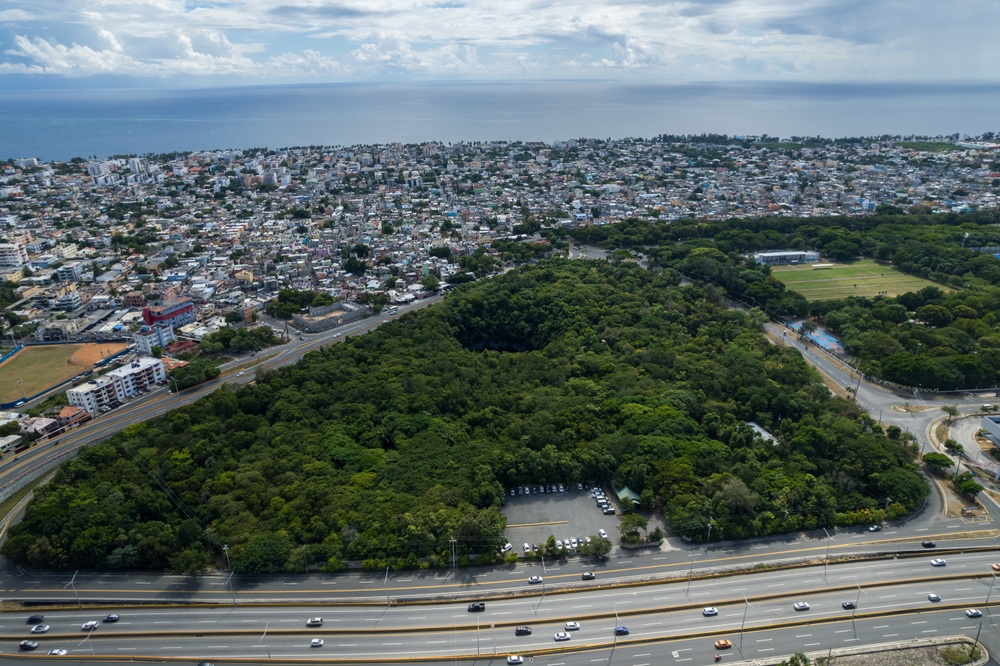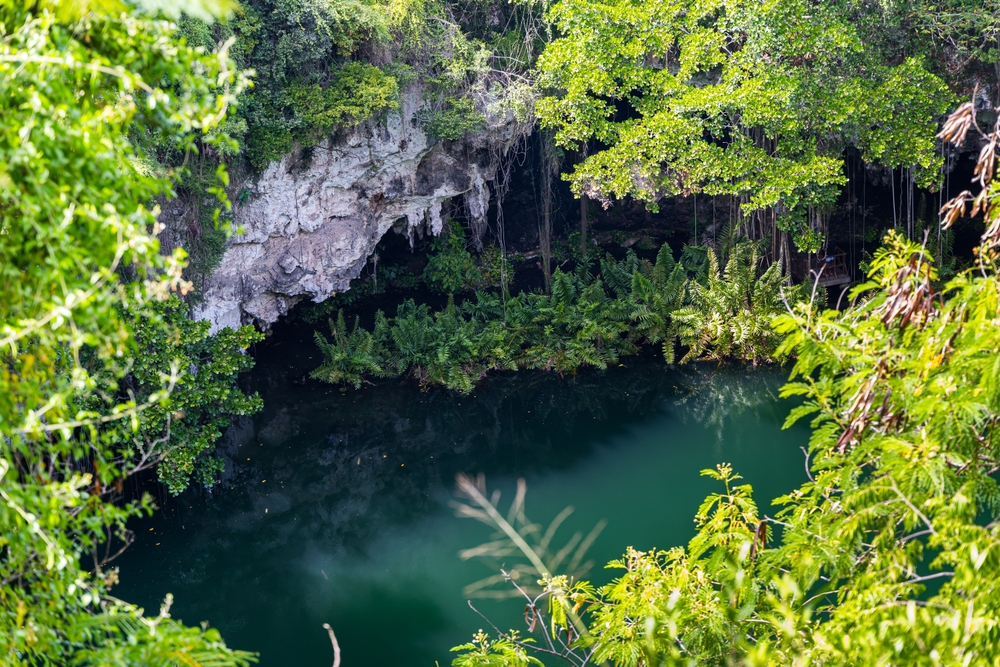Three Eyes Overview
Three Eyes National Park (locally known as Parque Nacional Los Tres Ojos) is a unique natural and cultural site located in Santo Domingo, the capital city of the Dominican Republic. Although smaller in size, covering approximately 3 square miles (7.7 square kilometers), this park is a fascinating limestone cave system that holds three stunning freshwater lagoons, or “eyes,” nestled in underground caverns. These lagoons are the park’s namesake and are connected by narrow, rocky pathways that visitors can explore by foot. A fourth lagoon, hidden from initial view, can be accessed by crossing a short boat ride within the cave system.
The park’s landscape is dominated by limestone formations, sinkholes, and caves that date back thousands of years. The caves were formed through geological processes as underground rivers carved their way through the stone, creating the stunning caverns that exist today. Visitors can walk along well-maintained paths, marveling at the crystal-clear waters of the lagoons and the stalactite and stalagmite formations that adorn the caves. The lagoons are illuminated by sunlight that filters through the caves’ openings, creating a magical effect that highlights the natural beauty of the space.
Vegetation in the park is a mixture of tropical plants that thrive in the humid, sheltered environment of the caves. Ferns, mosses, and vines drape the rock walls, adding to the lush, otherworldly ambiance.
Although the park is located in an urban setting, it supports a variety of small wildlife, particularly birds and bats that inhabit the caves. The lagoons are also home to small fish and other aquatic creatures. Three Eyes National Park offers a peaceful retreat from the bustling city and provides visitors with a glimpse into the region’s geological and ecological wonders.
Park Map
Three Eyes National Park Highlights
Engaging Three Eyes National Park
Sources
- Dominican Abroad, Visiting the Three Eyes National Park, https://www.dominicanabroad.com/three-eyes-national-park-santo-domingo/, retrieved August 2024.
- Explore Share, Explore the Caves and Lagoons, https://www.explore-share.com/trip/explore-the-caves-and-lagoons-in-the-3-eyes-national-park-near-santo-domingo-half-day/, retrieved August 2024.
- Go Dominican Republic, Parque Nacional Los Tres Ojos, https://www.godominicanrepublic.com/listing/parque-nacional-los-tres-ojos/3685/, retrieved August 2024.
- This Rare Earth, Guide to Three Eyes National Park, https://thisrareearth.com/the-ultimate-guide-to-three-eyes-national-park-caves-in-santo-domingo/, retrieved August 2024.
- Wikipedia, Los Tres Ojos National Park, https://en.wikipedia.org/wiki/Los_Tres_Ojos_National_Park, retrieved August 2024.








































































